Hello everyone, I hope you all are well and doing good. It's my very first post in this new community. I wish everyone work hard to grow this community by creating original and quality content. I always prefer quality over quantity.
Here I'm sharing photographs of a beautiful spider.
Introduction
The jumping spider belongs to a well-known species Salticidae. The most common name of this spider is Jumping Spider. The Salticidae family of spiders includes umping spiders. It had over 600 identified genera and over 6000 recognized species as of 2019, making it the largest spider family, accounting for 13% of all species.

Jumping spiders have some of the greatest vision of all arthropods, which they employ for courtship, hunting, and navigation. Although most species move inconspicuously and slowly, they are capable of making quick jumps, especially when hunting, but also in response to abrupt dangers or bridging large gaps.
Visions
Jumping spiders have four pairs of eyes: three fixed secondary pairs and one movable principle pair.
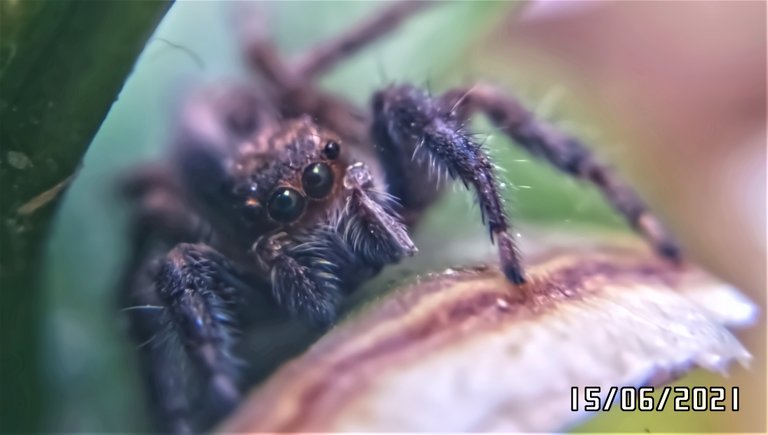
Many species have vestigial posterior median eyes (PMEs), however, in some primitive subfamilies, they are comparable in size to the other secondary eyes and aid in motion detection.
The decreased pair of eyes, while unable to create images, are supposed to function similarly to insect ocelli by receiving light from the sky.
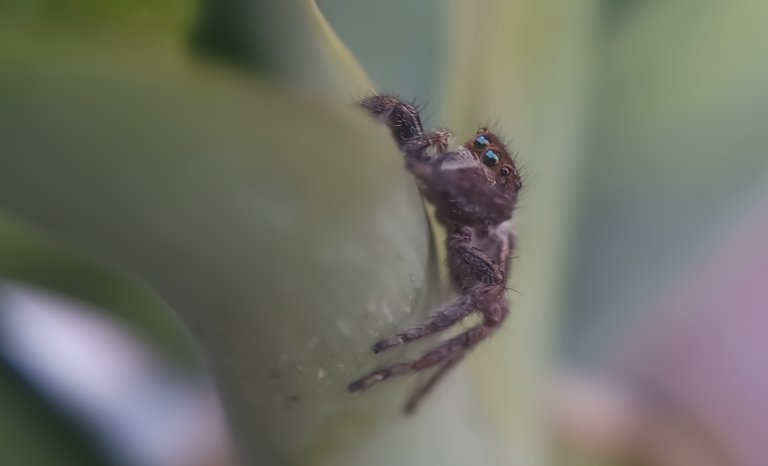
Food Source
Although jumping spiders are typically carnivorous, numerous species have been observed to consume nectar,[28] and one species, Bagheera Kipling, is a plant-feeding species. Seeds and fruit are not known to be eaten by any of them. Jumping spiders get nectar from extrafloral nectaries on plants like Chamaecrista fasciculata (partridge pea), and the plant benefits when the spiders eat whatever pests they find.
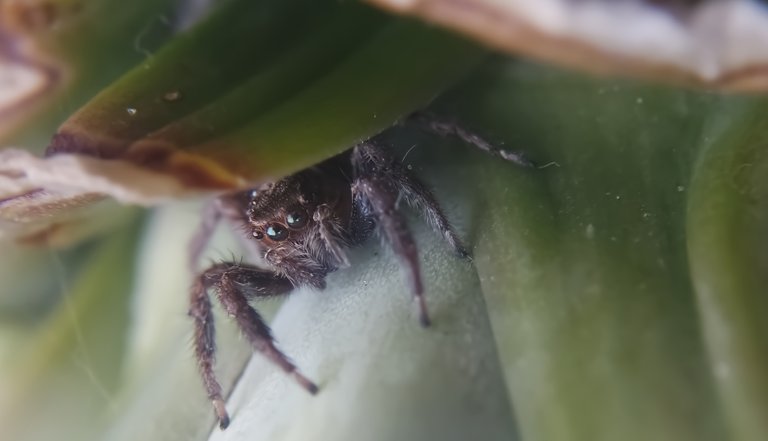
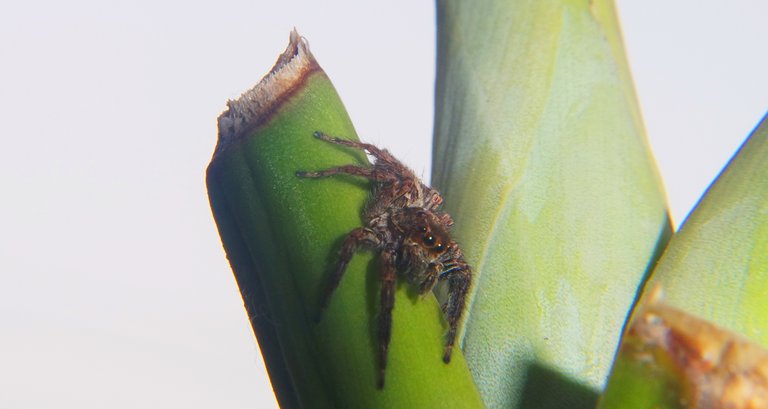
Fossils
Only a few fossils of jumping spiders have been discovered. All of the ones that have been discovered are from Cenozoic amber. The earliest fossils come from Baltic amber, which dates from 54 to 42 million years ago during the Eocene epoch. Other fossil jumping spiders have been discovered in amber from Chiapan and the Dominican Republic.
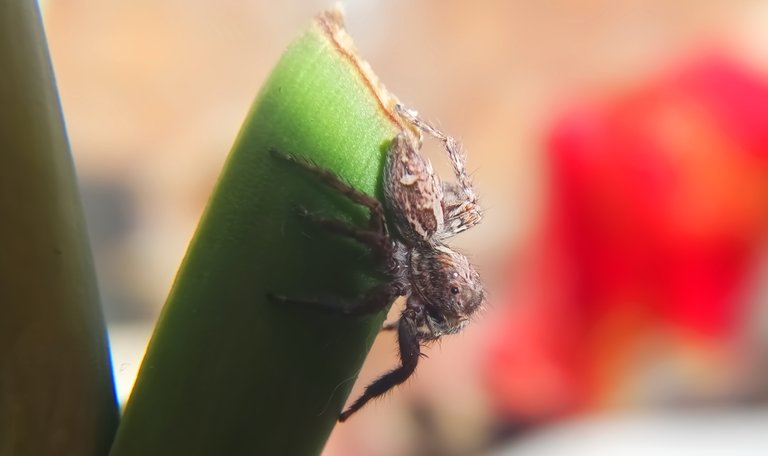
Appearance
Because of their small black bodies and small legs, jumping spiders are frequently mistaken for black widow spiders. Jumping spiders, on the other hand, can be brown, tan, or grey, with delicate white, grey, yellow, red, blue, or green markings.
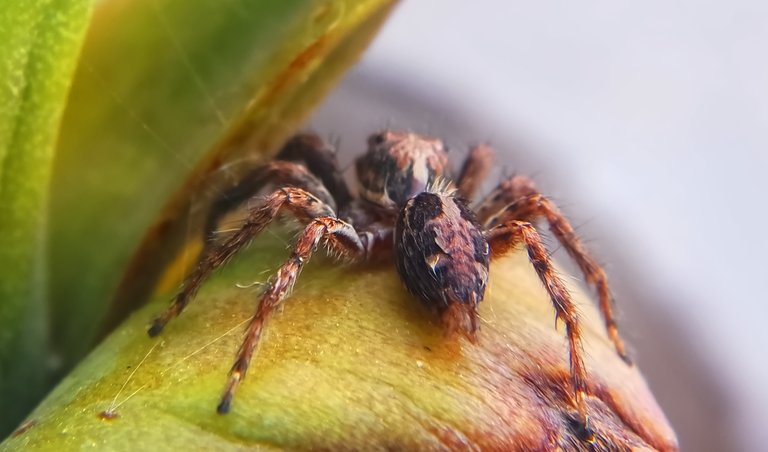
Adult jumping spiders are often clothed in dense hairs or scales that are vividly colored or iridescent and range in size from approximately 1/8-3/4” (4-18 mm). Their front legs are often broader and longer than the rest of their body.
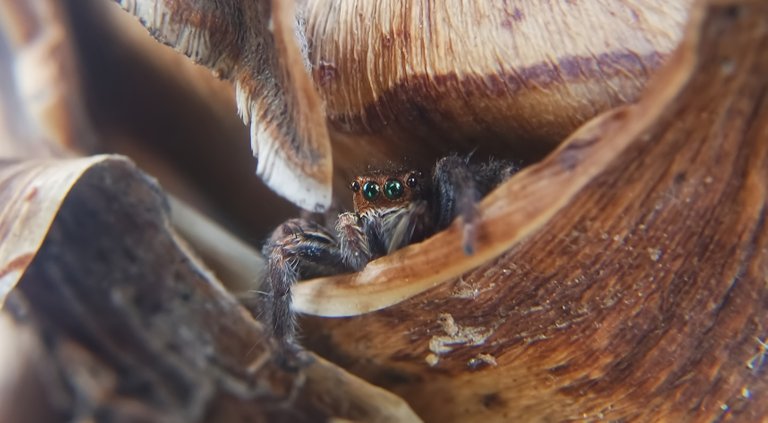
Camera Details:
- Location: Faisalabad, Pakistan
- Camera: Samsung NX Mini
- Lens: 9-27mm + 17X Macro
- Object: White Broadnosed Weevil
- Editing Software: Jumping Spider
▀▄▀▄▀▄ T̳̿͟͞h̳̿͟͞a̳̿͟͞n̳̿͟͞k̳̿͟͞s̳̿͟͞ ̳̿͟͞f̳̿͟͞o̳̿͟͞r̳̿͟͞ ̳̿͟͞R̳̿͟͞e̳̿͟͞a̳̿͟͞d̳̿͟͞i̳̿͟͞n̳̿͟͞g̳̿͟͞ ▄▀▄▀▄▀
🅱🅴🆂🆃 🆁🅴🅶🅰🆁🅳🆂
Hi @faisalamin
Congratulation!
Your post has been manually curated by @zrss.
😂. Save your peny for your future
Congratulations @faisalamin! You have completed the following achievement on the Hive blockchain and have been rewarded with new badge(s) :
Your next payout target is 2000 HP.
The unit is Hive Power equivalent because your rewards can be split into HP and HBD
You can view your badges on your board and compare yourself to others in the Ranking
If you no longer want to receive notifications, reply to this comment with the word
STOPVery nice Photography.
Thanks buddy.